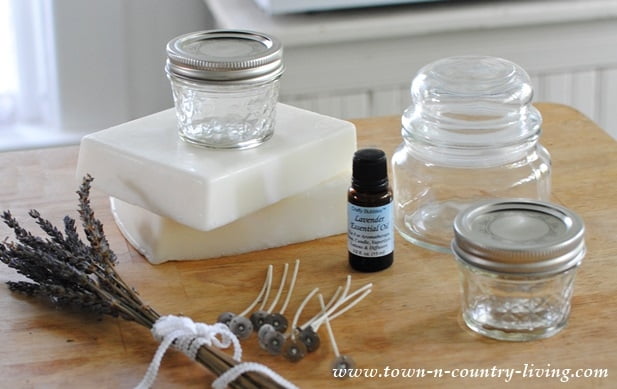Candle making is a fascinating and intricate craft that has been a part of human culture for centuries. It involves the creation of candles using various techniques, materials, and designs. In recent years, there has been a growing interest in handmade and artisanal products, including candles, leading many to consider candle making as a potential business venture.
Candle making falls under the business category of artisanal crafts. It combines elements of art and manufacturing, as it requires creativity and skill to produce unique and high-quality products on a consistent basis. This article will explore the historical significance of candle making as a business, the art and science behind the craft, the evolving market for handmade candles, and the challenges and opportunities associated with starting and running a candle making business.
From its rich history to its modern-day resurgence, this article aims to provide an in-depth look at the world of candle making as both an art form and a business endeavor. Whether you are a seasoned candle maker looking to turn your passion into a profitable enterprise or someone interested in delving into the world of artisanal crafts, this article will offer valuable insights into the business category of candle making.
The History of Candle Making as a Business
Early Trade and Production
In the Middle Ages, candle making became a profitable trade and was an essential business for individuals known as chandlers. These chandlers would create candles using various materials such as animal fats, beeswax, and sometimes even whale oil. The popularity of candles continued to grow, especially with the development of the first candle-making machine in 1834 by Joseph Morgan.
The Industrial Revolution and Modernization
The industrial revolution brought significant changes to the candle making industry with the introduction of paraffin wax in the mid-19th century. This new material allowed for mass production of candles, leading to a shift in the way candles were manufactured and marketed. The business aspect of candle making expanded as companies began producing and selling candles on a larger scale. Today, we see a wide variety of commercially manufactured candles available in stores all over the world.
As society continues to value handcrafted and artisanal products, there has been a resurgence in interest for handmade candles. Recognizing this trend has led to many entrepreneurs pursuing candle making not just as a hobby but as a legitimate business opportunity.
The Art and Science of Candle Making
Candle making is both an art and a science, blending creativity with precise measurements and techniques. The process involves meticulously melting and combining wax with fragrance oils and dyes, pouring it into molds, and carefully monitoring the cooling process to ensure the perfect candle. This delicate balance requires a deep understanding of the materials used and how they interact.
In terms of business category, candle making can be seen as a combination of art, craft, and manufacturing. It involves artistic creativity in designing unique candles that will appeal to consumers, craftsmanship in the careful production of each candle, and manufacturing in the large-scale production of candles for retail.
The artistry in candle making lies in creating visually appealing candles that stand out on store shelves or online marketplaces. Craftsmanship comes into play during the hands-on process of pouring and setting candles, ensuring that each one meets high standards of quality. Lastly, manufacturing principles apply when scaling up production to meet demand while maintaining consistent quality.
Candle making is truly a versatile business category that draws from different disciplines, making it a unique and dynamic venture for entrepreneurs looking to enter the market. With a growing demand for handcrafted goods, there are numerous opportunities for success in this industry.
| Business Category | Description |
|---|---|
| Art | Creative aspect of designing visually appealing candles |
| Craft | Hands-on process of producing high-quality candles |
| Manufacturing | Scaling up production while maintaining consistent quality |
The Business Category of Candle Making
Candle making is a unique business that straddles the line between art, craft, and manufacturing. On one hand, creating handmade candles involves artistic expression, creativity, and a keen eye for design. On the other hand, there are specific scientific processes and techniques involved in the manufacturing of candles on a larger scale. This duality raises the question: what business category does candle making fall into?
Many would argue that candle making is both an art and a craft. The meticulous process of blending different waxes, selecting fragrances, and pouring or molding the candles requires a high level of skill and creativity. Each handmade candle is a work of art with its own unique characteristics. Additionally, the decorative aspects of candle making, such as carving and sculpting, further support its classification as an art form.
When it comes to manufacturing, candle making can also be seen as a small-scale production process. For those who produce candles on a larger scale for commercial purposes, there are strict quality control measures, standardized production methods, and distribution channels to consider – all of which are characteristic of manufacturing businesses.
Ultimately, what business category is candle making? It seems that this industry defies rigid categorization and may be best described as a versatile hybrid of artistry, craftsmanship, and small-scale manufacturing.
| Business Category | Description |
|---|---|
| Art/Craft | Involves creativity and skill in producing unique handmade candles. |
| Manufacturing | For commercial purposes involves standard production methods and quality control measures. |
The Growing Market for Handcrafted Candles
As consumer preferences continue to shift towards more sustainable and artisanal products, the market for handcrafted candles has been experiencing substantial growth. Handmade candles are in high demand as they offer unique designs, high-quality materials, and personalized touches that cannot be replicated by mass-produced candles. The rising interest in eco-friendly and natural products has also contributed to the increasing popularity of handcrafted candles.
In addition to the environmental and quality considerations, consumers are also drawn to the story and artistry behind handmade candles. They appreciate the craftsmanship involved in creating each piece, as well as the opportunity to support local artisans and small businesses. Furthermore, the rise of online platforms and social media has allowed independent candle makers to showcase their products to a global audience, expanding their reach beyond local markets.
The Influence of Trends and Aesthetics
One of the driving forces behind the growing market for handcrafted candles is the influence of lifestyle and design trends. Consumers are seeking not only functional candles but also decorative pieces that enhance their living spaces. The appeal of aesthetically pleasing candle designs has led to an increased demand for unique shapes, colors, textures, and fragrances.
From minimalist modern designs to bohemian-inspired creations, handcrafted candles have become essential elements in interior decor and self-care rituals. As a result, candle makers have had to adapt their offerings to cater to diverse aesthetic preferences, further fueling the expansion of this market segment.
The Role of Handcrafted Candles in Gift-Giving
Handcrafted candles have also become a popular choice for gift-giving occasions due to their meaningful and personalized nature. Whether it’s a birthday, wedding, or holiday celebration, handmade candles make thoughtful presents that convey a sense of thoughtfulness and care.
Consequently, many consumers actively seek out artisanal candle brands when looking for distinctive gifts that stand out from conventional options. This trend reinforces the steady growth of the handcrafted candle market as it continues to position itself as a desirable choice for both personal use and gifting purposes.
Starting a Candle Making Business
Candle making is a versatile business that can fall into multiple categories such as art, craft, or manufacturing. Before starting a candle making business, it’s important to understand the intricacies of the trade and consider various tips and considerations. Here are some key points to keep in mind when venturing into the world of candle making as a business:
- Choose the Right Business Structure: Determine whether you want to operate as a sole proprietorship, partnership, limited liability company (LLC), or corporation. Each has its own advantages and disadvantages in terms of legal protection, tax implications, and administrative requirements.
- Research and Develop Unique Candle Recipes: Stand out in the market by creating unique candle designs and scents that appeal to your target audience. Conduct research on different wax types, wicks, fragrances, and colorants to develop your signature candle products.
- Invest in Quality Supplies: The quality of your candles will heavily rely on the supplies you use. Invest in high-quality wax, fragrance oils, wicks, and dyes to ensure a superior end product.
Tips for Success
- Develop a Solid Business Plan: Outline your business goals, target market, competitive analysis, marketing strategies, and financial projections in a comprehensive business plan.
- Understand Regulations and Safety Standards: Familiarize yourself with local regulations for candle making businesses. Ensure that your products meet safety standards for labeling, packaging, and burning instructions.
- Create a Strong Brand Identity: Establish a compelling brand that resonates with your target customers. This includes designing a unique logo, packaging, and labeling that reflect the quality and aesthetic of your candles.
By carefully considering these tips and factors before opening a candle making business you can ensure success and longevity in this lucrative industry.
Marketing and Selling Handmade Candles
When it comes to marketing and selling handmade candles, there are various strategies that can be utilized to reach potential customers and increase sales. Whether you are selling your candles online, at craft fairs, or in local shops, it’s important to have a solid marketing plan in place to effectively promote your products.
To effectively market and sell handmade candles, consider the following strategies:
- Utilize social media: Create visually appealing posts featuring your candles and share them on platforms like Instagram, Facebook, and Pinterest. Engage with your followers by sharing behind-the-scenes looks at the candle making process and offering exclusive promotions.
- Collaborate with influencers: Partnering with influencers in the home decor or lifestyle niche can help increase the visibility of your candles. Look for influencers who align with your brand aesthetic and values, and consider sending them samples of your candles to feature on their platforms.
- Attend local markets and craft fairs: Setting up a booth at local markets and craft fairs can provide an opportunity to showcase your handmade candles to a wide audience. Consider offering special promotions or discounts for event attendees to incentivize purchases.
Selling handmade candles successfully also requires understanding your target market and tailoring your marketing efforts to appeal to their preferences. Consider conducting market research to identify potential customer demographics, such as age, gender, income level, and interests. This information can help inform your marketing strategies and product offerings.
In addition to traditional marketing methods, consider exploring e-commerce platforms like Etsy or creating your own online store to reach a wider audience beyond your local area. Building a strong brand presence through effective marketing can help differentiate your handmade candles from mass-produced options and attract loyal customers who appreciate the artistry and quality of handcrafted items.
Challenges and Opportunities in the Candle Making Business
Candle making can be a highly rewarding business, but like any venture, it comes with its own set of challenges and opportunities. One of the biggest challenges in the candle making business is the level of competition.
With the growing market for handcrafted candles, it can be difficult to stand out among other businesses in the same category. It is important for candle makers to find unique selling points and establish a strong brand identity to separate themselves from their competitors.
Another challenge is sourcing high-quality materials at an affordable price. The cost of raw materials such as wax, wicks, and scents can add up quickly, especially for small businesses. Finding reliable suppliers and negotiating favorable pricing terms is essential for maintaining profitability in the candle making business.
On the other hand, there are also numerous opportunities in the candle making industry. As consumers become increasingly interested in sustainable and eco-friendly products, there is a growing demand for natural and non-toxic candles made from soy or beeswax. Candle makers have the chance to tap into this market by offering environmentally friendly alternatives to traditional paraffin candles.
Furthermore, with the rise of e-commerce and social media, there are more avenues than ever for candle makers to promote and sell their products directly to consumers. Online platforms like Etsy and Instagram have enabled small businesses to reach a global audience without the need for a physical storefront. Embracing digital marketing strategies and capitalizing on social media trends can open up new opportunities for growth and success in the candle making business.
Conclusion
As we have explored in this article, the business category of candle making is a unique blend of art, craft, and manufacturing. The history of candle making as a business dates back centuries, but it has evolved into a thriving industry with a growing market for handcrafted candles. The art and science of candle making continue to fascinate and attract new entrepreneurs looking to enter the industry.
Despite challenges such as competition and changing consumer preferences, there are still opportunities for those interested in starting their own candle making business. In fact, the demand for handcrafted candles has been on an upward trajectory, with consumers increasingly seeking out unique and high-quality products.
In conclusion, the future of candle making as a business looks promising, especially for those who are willing to innovate and differentiate themselves in the market. By staying attuned to consumer trends, mastering the craft of candle making, and leveraging effective marketing strategies, entrepreneurs can capitalize on the growing demand for handcrafted candles and carve out a successful niche in this dynamic industry.
Frequently Asked Questions
What Industry Are Candles Considered?
Candles are considered part of the home fragrance industry. This industry includes products aimed at adding pleasant scents to a home, such as candles, diffusers, and room sprays.
What Kind of Product Is a Candle Considered?
A candle is considered a decorative and functional product. It not only provides light and warmth but also adds ambiance and scent to a space.
What Retail Category Are Candles?
Candles fall under the retail category of home decor and accessories. They are often found in sections dedicated to adding ambiance and fragrance to one’s living space within retail stores.

Welcome to my candle making blog! In this blog, I will be sharing my tips and tricks for making candles. I will also be sharing some of my favorite recipes.





